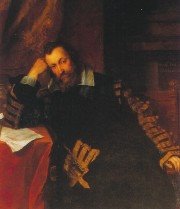* * *
Historical legacy
Although the Casket Letters were accepted by the inquiry as genuine after a study of the handwriting, and of the information contained therein, and were generally held to be certain proof of guilt if authentic, the inquiry reached the conclusion that nothing was proven. From the start, this could have been predicted as the only conclusion that would satisfy Elizabeth. James MacKay comments that one of the stranger 'trials' in legal history ended with no finding of guilt with the result that the accusers went home to Scotland and the accused remained detained in 'protective custody'.
It is impossible now to prove the case either way. Without the Casket Letters, there would have been no case against Mary, and with hindsight it is difficult to say that any of the major parties involved considered the truth to be a priority. However, it is notable that Lady Antonia Fraser, James MacKay, and John Guy who have written well-respected biographies of Mary come to the same conclusion that they were forged. Guy has actually examined the Elizabethan transcripts of the letters rather than relying upon later printed copies.[3] He points out that the letters are disjointed. He also draws attention to the fact that the French version of one of the letters is bad in its use of language and grammar. Mary was an educated woman who could read, write, and speak French fluently. The construction of one of the letters in French has mistakes that a woman with her understanding would not make.
Another point made by these commentators is that the Casket Letters did not appear until the Conference of York. Mary had been forced to abdicate in 1567 and held captive for the best part of a year in Scotland. No reference can be found to the letters being used as evidence against Mary during this period. There was every reason for these letters to be made public to support her imprisonment and forced abdication. The originals disappeared after the Conference of York, thus adding to the sense that the letters were probably forged.
Though Mary Stuart has not been canonised by the Catholic Church, many consider her a martyr, and there are relics of her. Her prayer book was long shown in France. Her apologist published, in an English journal, a sonnet which Mary was said to have composed, written with her own hand in this book. A celebrated German actress, Mrs. Hendel-Schutz, who excited admiration by her attitudes, and performed Friedrich Schiller's "Maria" with great applause in several German cities, affirmed that a cross which she wore on her neck was the very same that once belonged to the unfortunate queen.
Relics of this description have never yet been subjected to the proof of their authenticity.

Mary's personal breviary, which she took with her to the scaffold, is preserved in the Russian National Library of St. Petersburg.
http://en.wikipedia.org/wiki/Mary_queen_of_scots
* * *

No comments:
Post a Comment